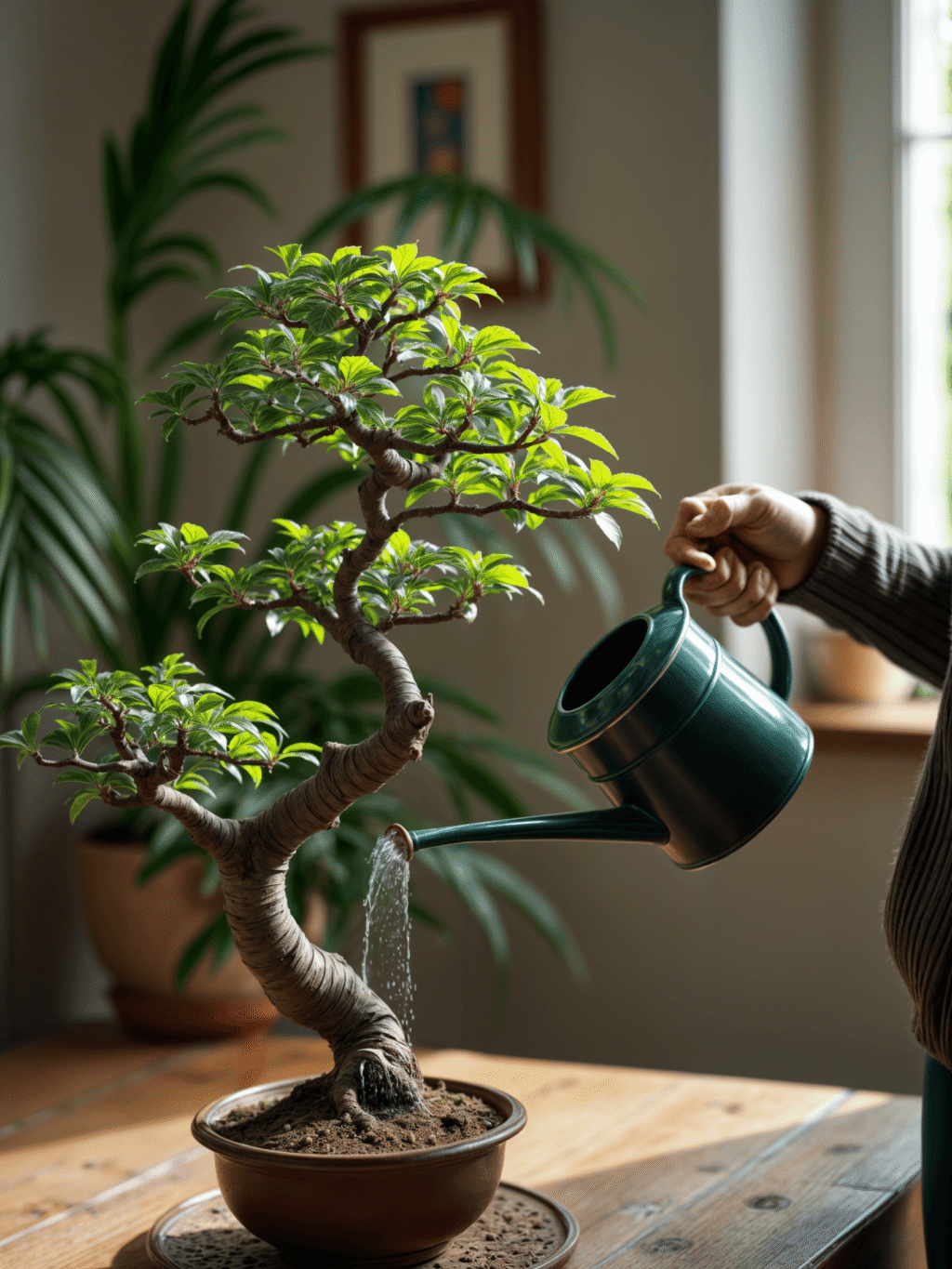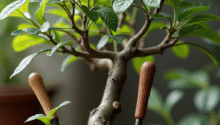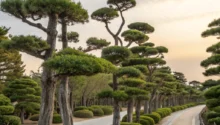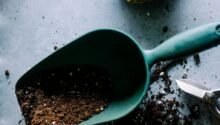Table of Contents
Introduction
Watering your bonsai tree correctly is critical for maintaining its health and vitality. Unlike typical houseplants, bonsai require specialized watering methods due to their unique growth conditions. This comprehensive guide covers essential bonsai tree watering techniques, schedules, seasonal adjustments, and top affiliate products to simplify your watering routine.
Importance of Proper Watering
Proper watering is essential for bonsai trees because they grow in shallow pots containing limited soil that can dry out quickly. Appropriate watering ensures optimal growth, prevents diseases, and maintains vibrant foliage. Incorrect watering, either too much or too little, can lead to severe health issues for your bonsai.

OrganicGardeningIdeas Bonsai Insider
Get exclusive bonsai care tips, organic gardening trends, and special guides delivered to your inbox.
We respect your privacy and will never share your information. See our Privacy Policy.
In bonsai tree care, watering is one of the primary skills a grower must master. Even the healthiest bonsai can suffer from improper watering, and beginners often struggle to find the right balance. Understanding the dynamics of water retention, evaporation, and root absorption is crucial.
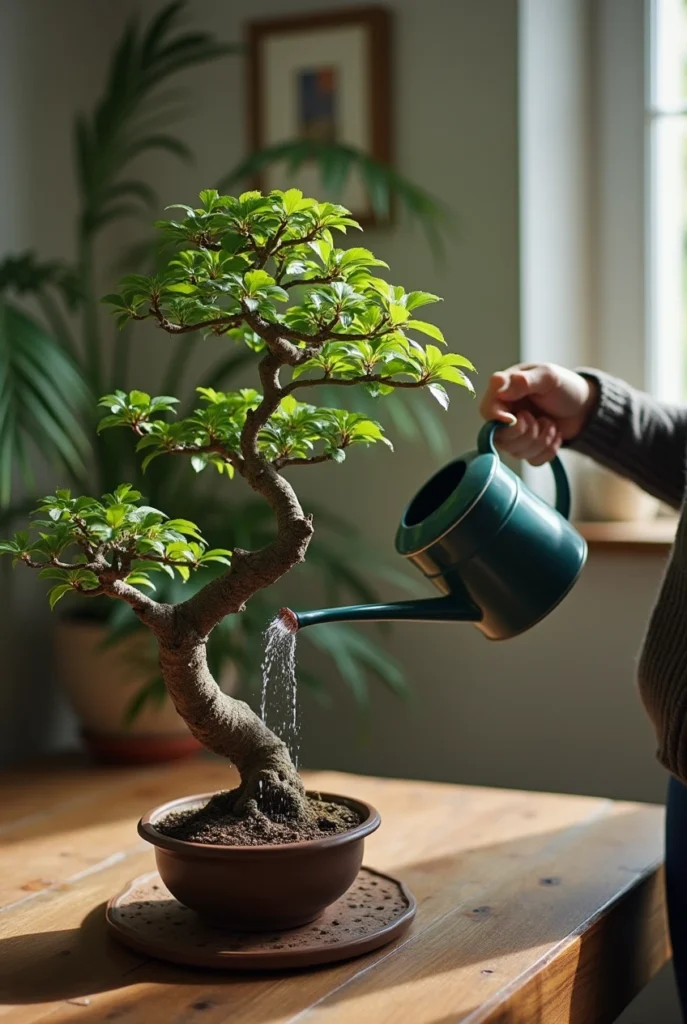
Key Factors for Watering Frequency
Species and Leaf Size
Different species have unique watering needs. Smaller-leafed species generally require more frequent watering, as their soil dries faster, whereas large-leafed species retain moisture longer. Tropical bonsai species, for example, typically need more water compared to hardy outdoor types like junipers.
Pot Size and Soil Type
Smaller pots and fast-draining soil mixes, commonly used in bonsai cultivation, mean that water evaporates quickly, necessitating frequent watering. Soils with akadama, pumice, and lava rock offer excellent drainage but dry out quicker than organic soils.
Seasonal and Environmental Conditions
Outdoor bonsai trees typically require daily watering in hot, dry summer conditions. In contrast, indoor bonsai watering schedules vary based on factors such as indoor humidity and temperature. Homes with air conditioning or heating can dry the air, affecting moisture retention.
Recommended Product:
🌱 Premium Bonsai Soil Mix (Amazon affiliate link) – Ideal for drainage and moisture retention.
Checking Soil Moisture: The Chopstick Method
A simple yet effective method for determining soil moisture involves using a wooden chopstick. Insert the chopstick into the soil and wait five minutes. If the chopstick comes out damp, you don’t need to water yet. If it’s dry, it’s time to water your bonsai.
Alternatively, you can also use a digital soil moisture meter for more precise readings. Always check different areas of the soil, as water distribution may not be uniform.
Bonsai Tree Watering Schedule (Reference Guide)
| Species | Season | Frequency | Tips |
|---|---|---|---|
| Juniper | Summer | Daily | Mist leaves midday |
| Ficus (Indoor) | Winter | Every 2-3 days | Use room temperature water |
| Maple (Outdoor) | Autumn | Every other day | Protect from frost |
| Chinese Elm | Spring | Every day | Increase humidity |
| Azalea | Summer | Twice daily | Morning and evening |
Remember, these are general guidelines; always check soil moisture before watering.
Best Tools for Effective Watering
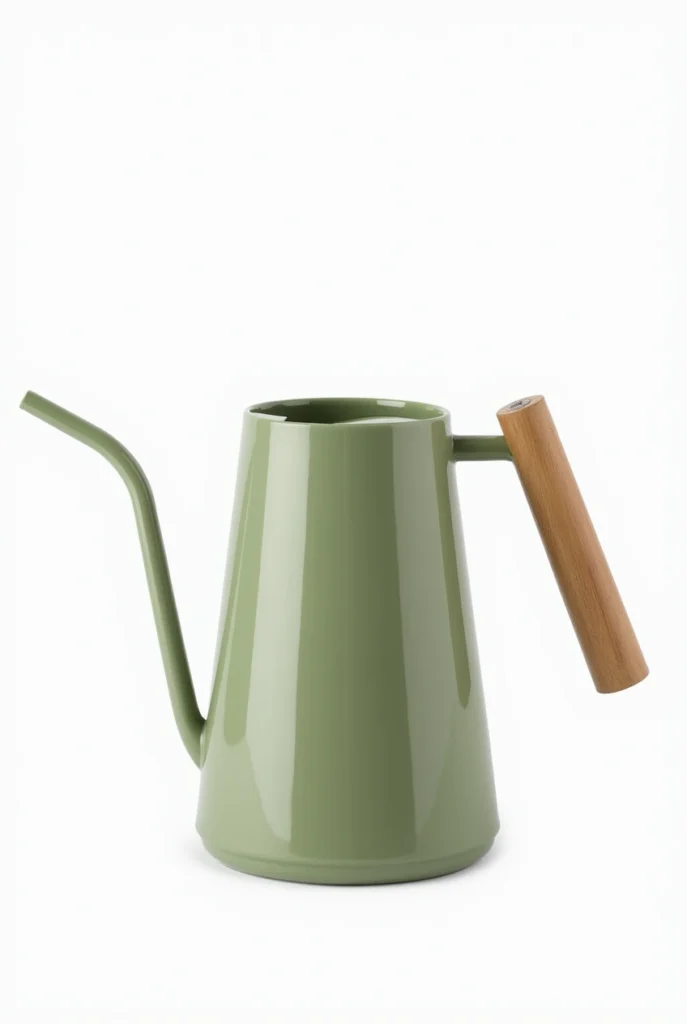
Fine-Rose Bonsai Watering Can
Provides gentle and even watering to protect delicate bonsai soil from erosion. → Buy on Amazon
Digital Soil Moisture Meter
Accurately measures moisture levels, helping avoid overwatering and underwatering. → Check price on Amazon
Self-Watering Capillary Tray
Maintains consistent humidity and soil moisture, ideal for periods of absence. → View on Amazon
Misting Bottle for Humidity Control
Perfect for misting foliage, especially in dry climates or during hot summers. → Buy on Amazon
Common Watering Mistakes to Avoid
- Overwatering: Can lead to root rot, mold, and soil fungus. Ensure proper drainage.
- Underwatering: Results in curled, brown leaves due to dehydration and stress.
- Incorrect Timing: Watering during the heat of the day can cause evaporation loss. Early morning or late evening is best.
- Ignoring Seasonal Changes: Not adjusting your watering habits between seasons can harm your bonsai.
Seasonal Watering Adjustments
- Spring: Increase watering frequency; bonsai trees wake from dormancy and start growing actively. Use diluted fertilizers to support new growth.
- Summer: Bonsai trees need the most water during summer. Water early morning and optionally mist leaves during midday heat.
- Autumn: Growth slows; watering can be gradually reduced. Protect trees from sudden temperature drops.
- Winter: Indoor bonsai trees need less water. Keep an eye on heating systems that dry out air and adjust misting accordingly.
Frequently Asked Questions
How frequently should I water my bonsai tree?
The frequency depends on species, pot size, soil mix, and environment. Always check soil moisture daily during active growing seasons.
Is tap water suitable for bonsai tree watering?
Yes, but it’s best to use room-temperature water and, if possible, let tap water sit overnight to allow chlorine to evaporate.
Can I mist my bonsai tree daily?
Yes, misting helps maintain humidity and can benefit tropical bonsai trees, especially during dry seasons or indoors.
Conclusion
Consistent bonsai tree watering practices, proper soil moisture checks, and using the right tools are the foundation of healthy, thriving bonsai trees. Whether you are a beginner or an experienced grower, mastering watering techniques ensures your miniature masterpieces flourish for years.

OrganicGardeningIdeas Bonsai Insider
Get exclusive bonsai care tips, organic gardening trends, and special guides delivered to your inbox.
We respect your privacy and will never share your information. See our Privacy Policy.

